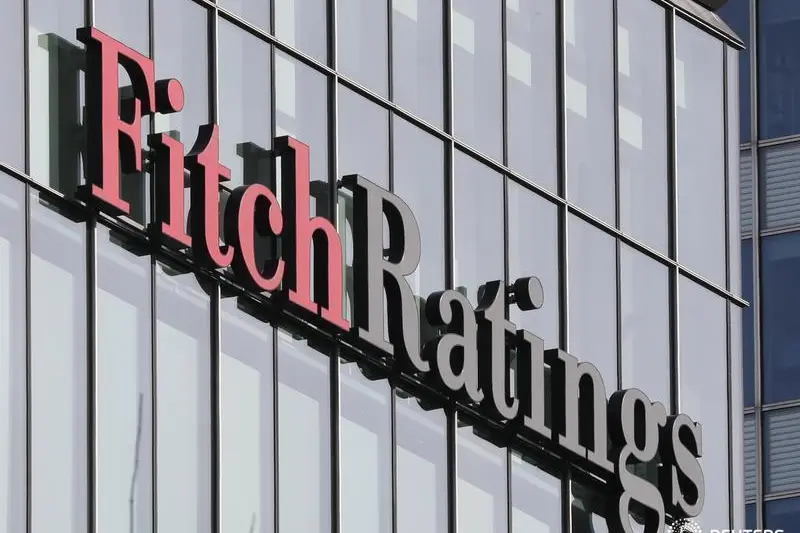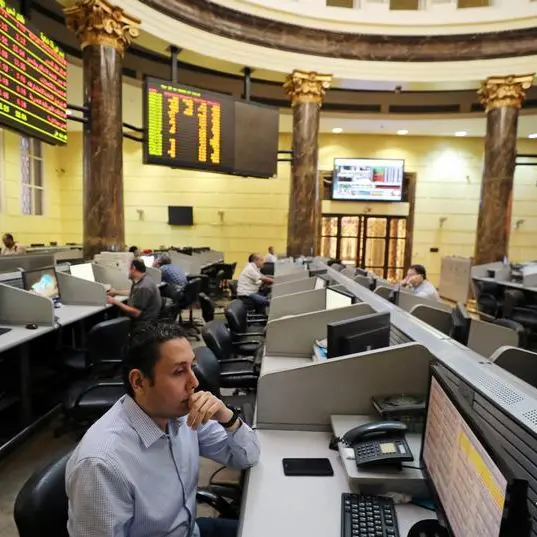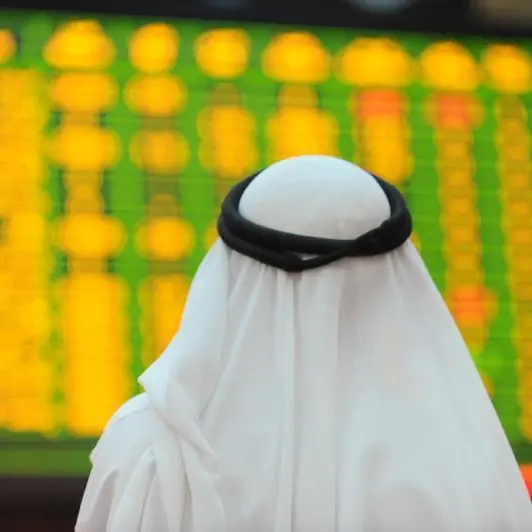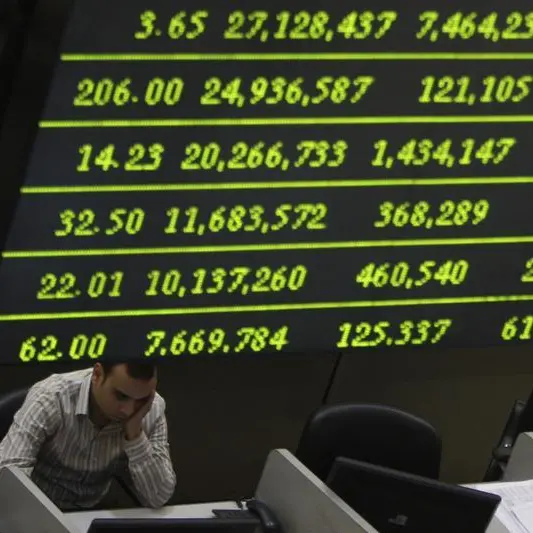PHOTO
Fitch Ratings-London-April 10: Fitch Ratings has assigned Saudi Arabian Oil Company's (Saudi Aramco) GMTN programme and debut bonds issued under the programme final 'A+' senior unsecured ratings. The ratings are in line with Saudi Aramco's 'A+' Issuer Default Rating (IDR), which has a Stable Outlook.
Saudi Aramco is the world's largest oil producer and the national oil company of Saudi Arabia (A+/Stable). Its standalone profile corresponds to a rating of 'AA+', which sits at the upper boundary of the Fitch rating spectrum for oil and gas companies, and reflects the company's high production, vast reserves, low production costs and very conservative financial profile.
On the other hand, the company is less integrated into natural gas and downstream than some of its international peers, though this would somewhat improve following the acquisition of Saudi Basic Industries Corp. (SABIC, A+/Stable). Saudi Aramco is also less diversified geographically as its upstream assets are located in a single country.
Saudi Aramco's IDR is capped at 'A+', reflecting strong links between the company and the sovereign, and the influence the state has on the company through regulating the level of production, taxation and dividends. In 2018, Saudi Aramco generated USD224 billion in EBITDA.
KEY RATING DRIVERS
World Largest Oil Company: Saudi Aramco is the world's largest oil producer by volume, the only oil producer in Saudi Arabia (outside of the neutral zone between Saudi Arabia and Kuwait), and the custodian of the kingdom's vast reserves. Its 2018 liquids production and its total hydrocarbon production averaged 11.6 million and 13.6 million barrels of oil equivalent per day (mmboepd), respectively, well ahead of the upstream output of global and regional integrated producers such as Abu Dhabi National Oil Company (ADNOC, AA/Stable), Royal Dutch Shell (AA-/Stable), Total SA (AA-/Stable), and BP plc (A/Stable). Saudi Aramco estimates its proved liquids reserves at 227 billion barrels and its total hydrocarbon reserves at 257 billion barrels of oil equivalent, which implies a reserve life of 52 years, a high and comfortable level by international standards.
Very Conservative Financial Profile: Saudi Aramco's financial profile is very conservative. At end-2018 its cash balances exceeded balance-sheet debt. We project that Saudi Aramco's leverage will remain low, even after the recently announced acquisition of SABIC, which we expect to be predominantly funded from the company's free cash flow (FCF). Our base case forecasts show that Saudi Aramco's funds from operations (FFO) adjusted net leverage will moderately increase towards 0.5x by 2021, which is consistent with the 'AA+' standalone profile and well below that of Shell (1.8x) and Total (1.6x), and broadly in line with that of ADNOC.
Conservative Financial Policy: Our leverage projections are in line with the company's financial policy. Saudi Aramco's targeted gearing (measured as net debt-to-net debt plus equity) is 5% to 15% through the cycle, with a target of being in the lower half. In absolute terms and assuming the current equity, this would translate into net debt of broadly between USD15 billion and USD50 billion. Our conservative forecasts show Saudi Aramco's net debt rising to around USD35 billion by 2021, after incorporating the SABIC transaction.
SABIC Acquisition: Saudi Aramco's acquisition of the government's 70% stake in SABIC, one of the largest petrochemical producer globally, fits into the company's vertical integration strategy. It should help diversify earnings while having a limited impact on Saudi Aramco's leverage. Overall, we view the transaction as rating-neutral. We understand from management that the deal should be predominantly funded by Saudi Aramco's FCF and that the cash consideration would be paid in instalments over 2019-21. According to our forecasts, SABIC will contribute around USD8 billion p.a. to Saudi Aramco's FFO.
Very Strong Standalone Profile: According to Fitch's 'Oil and Gas Production Rating Navigator Companion', the upper boundary of the rating spectrum for oil and gas companies extends to 'AA+' and is constrained by the inherent volatility of the sector. Taking into account Saudi Aramco's exceptionally strong business and financial profile, and ignoring sovereign-related risks, we assess the company's standalone credit profile at 'AA+'. Other oil and gas names Fitch rates in the 'AA' category include ADNOC, Shell and Total.
Close Links with Sovereign: Saudi Aramco's rating is constrained by that of Saudi Arabia. This reflects the influence the state exerts on the company through taxation and dividends, as well as regulating the level of production in line with its OPEC commitments.
Saudi Aramco is the key source of tax proceeds and forex revenue for the state. We estimate in 2015-17 the company accounted for around 70% of the country's budget revenue proceeds and 80% of its current external receipts. Saudi Aramco's potential IPO and other reforms could somewhat increase the company's autonomy; however, the inter-dependency between Saudi Arabia and Saudi Aramco will remain, supporting the sovereign cap on the latter's ratings.
Low-Cost Producer: Saudi Aramco's lifting costs (USD2.8/boe in 2018) and upstream capex (USD4.7/boe) are significantly lower than those of international integrated players and of some national oil companies, which is a significant advantage in the volatile oil price environment. However, this advantage is somewhat offset by its lower level of integration into natural gas and downstream compared with oil majors, which makes Saudi Aramco more exposed to oil prices. While Saudi Aramco's downstream capacity is significant in absolute terms and will increase to 3.7mmbpd following the commissioning of new facilities by end-2019, it will remain smaller relative to upstream production than that of international oil majors.
Strong Profitability: Saudi Aramco's per-barrel profitability significantly improved in 2017 as the state has reduced the company's tax rate to 50% from 85%, and started to compensate the company for income forgone as a result of Saudi Aramco's selling some of its products to domestic customers at regulated prices. In 2018, Saudi Aramco's FFO per barrel of oil equivalent amounted to USD26/boe, broadly comparable to that of Shell (USD38/boe), Total (USD31/boe) and ADNOC, and higher than that of Russian peers (e.g. Rosneft - USD13/boe). The acquisition of SABIC should add around USD1.5/bbl to Aramco's FFO per barrel.
Saudi Vision 2030: In April 2016, Saudi Arabia announced an ambitious long-term reform plan aimed at reducing the country's dependency on oil and diversifying its economy, as well as developing service sectors, such as tourism and healthcare, and infrastructure. The implications of the plan for Saudi Aramco include its diversification into downstream and potentially other areas, such as green energy and LNG, as well as the envisaged IPO of the company.
Initial Public Offering: Saudi Aramco's IPO is a key part of the Vision 2030 reform plan and we understand from the company that it remains on the medium-term agenda. The government is aiming to sell 5% of the company to the general public. The IPO itself is unlikely to have any major effect on Saudi Aramco's financial position; however, a public listing would result in higher financial transparency and probably more autonomy from the state. In addition, Saudi Aramco has already benefited from lower taxes, the domestic oil product price equalisation and other initiatives put forward by the government in anticipation of the IPO.
OPEC Agreement Positive: Saudi Arabia played a central role in the OPEC Plus agreement to cut production that was originally concluded in late 2016. In 2018, Saudi Arabia's oil production (including condensate) averaged 10.3mmbpd, around 1.7mmbpd below its maximum production capacity. We assume that in 2019 the country's production will approximate 10mmbpd as OPEC Plus may need to extend the production cut into 2H19 and beyond. We believe the agreement is ultimately positive for Saudi Aramco; though the company's volumes have been negatively impacted, the agreement helped to bring the market closer to equilibrium and to stabilise oil prices.
Off-Balance Sheet Guarantees: Most of Saudi Aramco's greenfield downstream projects, such as Sadara, Petro Rabigh and PRefChem, are financed by project finance debt, and the company provides completion/financial guarantees with regard to some of such projects. We do not add these guarantees to the company's adjusted leverage as we believe the probability of these guarantees being called upon is remote. However, if included the guarantees would not have a significant impact on Saudi Aramco's leverage.
Non-core Spending Low: Saudi Aramco has been involved in some social projects mandated by the government, but its business model is commercially-focused. In 2017-18 such projects included the construction of King Abdullah University of Science and Technology and King Abdullah Petroleum Studies and Research Centre. We believe that the scale of the spending associated with these initiatives is low and does not represent a significant financial burden for the company. Moreover, the company is reimbursed by the state for these projects.
DERIVATION SUMMARY
Saudi Aramco is the largest oil producer globally by volume and the exclusive oil producer in Saudi Arabia, except in the Saudi-Kuwaiti neutral zone. In 2018 its liquids production and its total hydrocarbon production averaged 11.6 million and 13.6 million mmboepd, respectively, well ahead of the upstream output of global and regional integrated producers such as ADNOC, Shell, Total and BP. The company's leverage is conservative and should remain much lower than that of its international peers even after its acquisition of a 70% stake in SABIC, and is more in line with that of ADNOC.
Saudi Aramco is less integrated into natural gas and downstream than some of its international peers, such as Shell and Total, which makes it more exposed to oil prices although this is mitigated by low cost of production, its downstream expansion strategy and the acquisition of SABIC.
Saudi Aramco's standalone credit profile corresponds to 'AA+', but this final rating is capped by that of Saudi Arabia in view of strong linkage between the company and the sovereign.
KEY ASSUMPTIONS
Fitch's Key Assumptions within our Rating Case for the Issuer
- Crude oil prices of USD65/bbl in 2019, USD62.5/bbl in 2020, USD60/bbl in 2021 and USD57.5/bbl thereafter
- Upstream production falling 3.5% yoy in 2019 on the back of the OPEC Plus deal and largely flat thereafter
- Annual capital expenditure as guided by the company
- Moderately growing dividends
- Acquisition of 70% stake in SABIC for USD69.1 billion with the consideration paid in tranches
RATING SENSITIVITIES
Saudi Aramco (for Long-Term IDR):
Developments That May, Individually or Collectively, Lead to Positive Rating Action
-A positive rating action on Saudi Arabia
Developments That May, Individually or Collectively, Lead to Negative Rating Action
-A negative rating action on Saudi Arabia
-Weakening of the linkage between Saudi Aramco and the sovereign (which we believe is unlikely), coupled with a weaker standalone credit profile, e.g. FFO adjusted net leverage rising to above 2x through-the-cycle
Saudi Arabia (see the latest Rating Action Commentary dated 22 November 2018):
Developments That May, Individually or Collectively, Lead to Positive Rating Action
-Fiscal consolidation or an extended rise in oil prices that generate a sustainable fiscal surplus and reverse the decline in the government's net creditor position
Developments That May, Individually or Collectively, Lead to Negative Rating Action
-Failure to shrink the budget deficit and halt the deterioration of the public sector balance sheet
-Spill-over from regional conflicts or a domestic political shock that threatens stability or affects key economic policies or activities
LIQUIDITY
Strong Liquidity: As of end-2018 Saudi Aramco's cash and cash equivalents (USD49billion) and Fitch-projected post-dividend FCF for 2019 exceeded the company's short-term debt (USD8 billion) and the first tranche of cash consideration to be paid under the SABIC deal upon closing. Our assessment of Saudi Aramco's financial flexibility also incorporates the company's substantial cash flow generation capacity, flexibility of the company's capex programme, low debt levels and access to international capital markets.
FULL LIST OF RATING ACTIONS
Saudi Arabian Oil Company
- GMTN programme: assigned senior unsecured long-term 'A+'
- Five bonds issued under GMTN programme for USD12 billion: assigned senior unsecured long-term 'A+'
Contact:
Principal Analyst
Vladislav Nikolov
Associate Director
+44 20 3530 1288
Supervisory Analyst
Dmitry Marinchenko, ACCA, CFA
Senior Director
+44 20 3530 1056
Fitch Ratings Limited
30 North Colonnade
London E14 5GN
Committee Chairperson
Peter Archbold, CFA
Senior Director
+44 20 3530 1172
Date of Relevant Rating Committee: 18 March 2019
Summary of Financial Statement Adjustments - N/A
Media Relations: Adrian Simpson, London, Tel: +44 20 3530 1010, Email: adrian.simpson@thefitchgroup.com.
Additional information is available on
Applicable Criteria
Corporate Rating Criteria (pub. 19 Feb 2019)
Corporates Notching and Recovery Ratings Criteria (pub. 23 Mar 2018)
Government-Related Entities Rating Criteria (pub. 29 Mar 2019)
Additional Disclosures
Dodd-Frank Rating Information Disclosure Form
Solicitation Status
Endorsement Policy
ALL FITCH CREDIT RATINGS ARE SUBJECT TO CERTAIN LIMITATIONS AND DISCLAIMERS. PLEASE READ THESE LIMITATIONS AND DISCLAIMERS BY FOLLOWING THIS LINK:
Copyright 2019 by Fitch Ratings, Inc., Fitch Ratings Ltd. and its subsidiaries. 33 Whitehall Street, NY, NY 10004. Telephone: 1-800-753-4824, (212) 908-0500. Fax: (212) 480-4435. Reproduction or retransmission in whole or in part is prohibited except by permission. All rights reserved. In issuing and maintaining its ratings and in making other reports (including forecast information), Fitch relies on factual information it receives from issuers and underwriters and from other sources Fitch believes to be credible. Fitch conducts a reasonable investigation of the factual information relied upon by it in accordance with its ratings methodology, and obtains reasonable verification of that information from independent sources, to the extent such sources are available for a given security or in a given jurisdiction. The manner of Fitch's factual investigation and the scope of the third-party verification it obtains will vary depending on the nature of the rated security and its issuer, the requirements and practices in the jurisdiction in which the rated security is offered and sold and/or the issuer is located, the availability and nature of relevant public information, access to the management of the issuer and its advisers, the availability of pre-existing third-party verifications such as audit reports, agreed-upon procedures letters, appraisals, actuarial reports, engineering reports, legal opinions and other reports provided by third parties, the availability of independent and competent third- party verification sources with respect to the particular security or in the particular jurisdiction of the issuer, and a variety of other factors. Users of Fitch's ratings and reports should understand that neither an enhanced factual investigation nor any third-party verification can ensure that all of the information Fitch relies on in connection with a rating or a report will be accurate and complete. Ultimately, the issuer and its advisers are responsible for the accuracy of the information they provide to Fitch and to the market in offering documents and other reports. In issuing its ratings and its reports, Fitch must rely on the work of experts, including independent auditors with respect to financial statements and attorneys with respect to legal and tax matters. Further, ratings and forecasts of financial and other information are inherently forward-looking and embody assumptions and predictions about future events that by their nature cannot be verified as facts. As a result, despite any verification of current facts, ratings and forecasts can be affected by future events or conditions that were not anticipated at the time a rating or forecast was issued or affirmed.
The information in this report is provided "as is" without any representation or warranty of any kind, and Fitch does not represent or warrant that the report or any of its contents will meet any of the requirements of a recipient of the report. A Fitch rating is an opinion as to the creditworthiness of a security. This opinion and reports made by Fitch are based on established criteria and methodologies that Fitch is continuously evaluating and updating. Therefore, ratings and reports are the collective work product of Fitch and no individual, or group of individuals, is solely responsible for a rating or a report. The rating does not address the risk of loss due to risks other than credit risk, unless such risk is specifically mentioned. Fitch is not engaged in the offer or sale of any security. All Fitch reports have shared authorship. Individuals identified in a Fitch report were involved in, but are not solely responsible for, the opinions stated therein. The individuals are named for contact purposes only. A report providing a Fitch rating is neither a prospectus nor a substitute for the information assembled, verified and presented to investors by the issuer and its agents in connection with the sale of the securities. Ratings may be changed or withdrawn at any time for any reason in the sole discretion of Fitch. Fitch does not provide investment advice of any sort. Ratings are not a recommendation to buy, sell, or hold any security. Ratings do not comment on the adequacy of market price, the suitability of any security for a particular investor, or the tax-exempt nature or taxability of payments made in respect to any security. Fitch receives fees from issuers, insurers, guarantors, other obligors, and underwriters for rating securities. Such fees generally vary from US$1,000 to US$750,000 (or the applicable currency equivalent) per issue. In certain cases, Fitch will rate all or a number of issues issued by a particular issuer, or insured or guaranteed by a particular insurer or guarantor, for a single annual fee. Such fees are expected to vary from US$10,000 to US$1,500,000 (or the applicable currency equivalent). The assignment, publication, or dissemination of a rating by Fitch shall not constitute a consent by Fitch to use its name as an expert in connection with any registration statement filed under the United States securities laws, the Financial Services and Markets Act of 2000 of the United Kingdom, or the securities laws of any particular jurisdiction. Due to the relative efficiency of electronic publishing and distribution, Fitch research may be available to electronic subscribers up to three days earlier than to print subscribers.
For Australia, New Zealand, Taiwan and South Korea only: Fitch Australia Pty Ltd holds an Australian financial services license (AFS license no. 337123) which authorizes it to provide credit ratings to wholesale clients only. Credit ratings information published by Fitch is not intended to be used by persons who are retail clients within the meaning of the Corporations Act 2001
Fitch Ratings, Inc. is registered with the U.S. Securities and Exchange Commission as a Nationally Recognized Statistical Rating Organization (the "NRSRO"). While certain of the NRSRO's credit rating subsidiaries are listed on Item 3 of Form NRSRO and as such are authorized to issue credit ratings on behalf of the NRSRO (see












